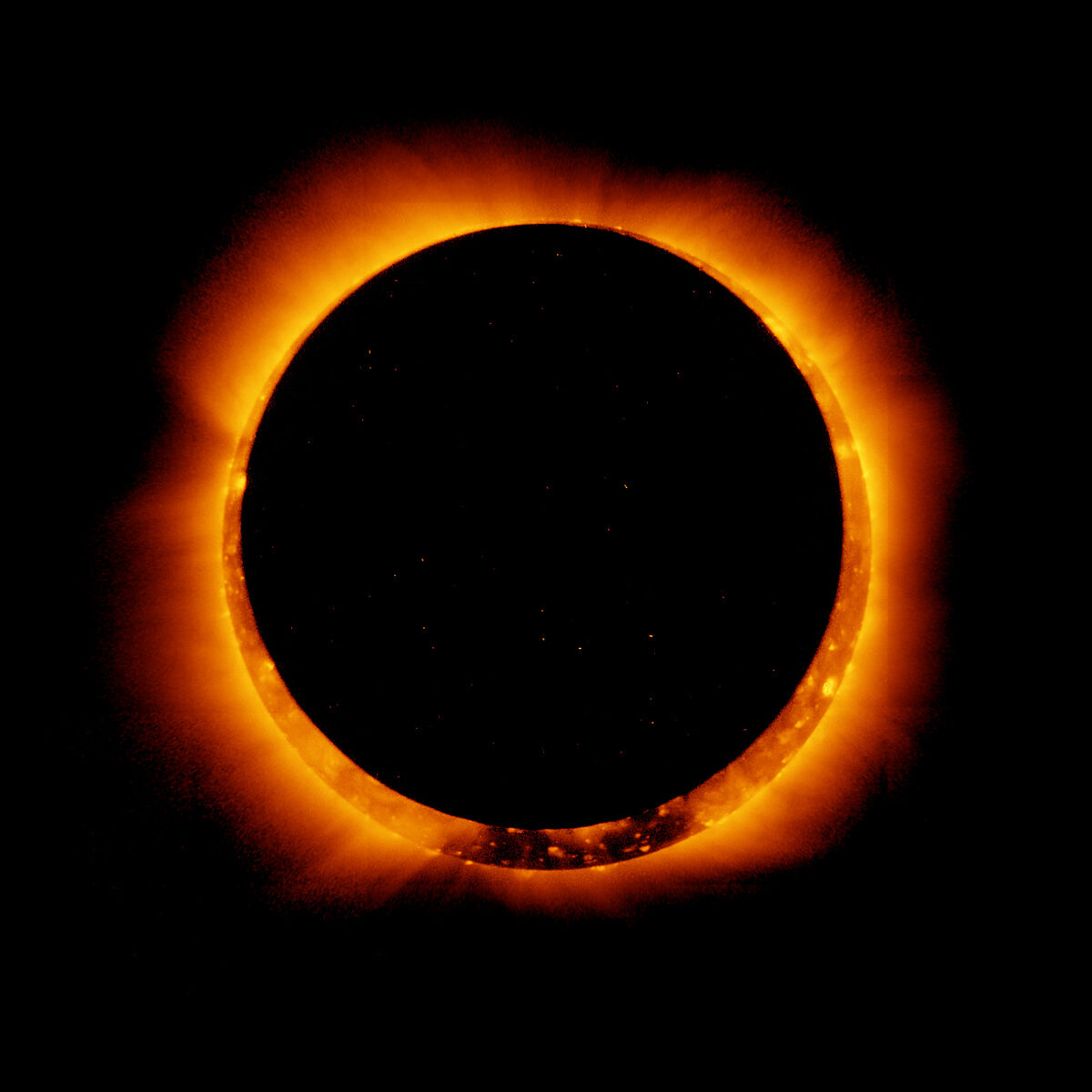Emily Lakdawalla • Jan 06, 2011
Solar eclipses from space: Hinode and SDO
I could watch these videos a hundred times. Two spacecraft that keep their ever-watchful eyes on the Sun -- NASA's Solar Dynamics Observatory (SDO) and JAXA's Hinode -- were doing their thing, when something large wandered past: the Moon. I love how you can pick out the lumps and bumps of mountains on the Moon's limb as it steps in front of the Sun in this SDO movie.
SDO observes its first lunar transit On October 7, 2010, NASA's Solar Dynamics Observatory (SDO) observed its first lunar transit when the new Moon passed directly between the spacecraft (in its geosynchronous orbit) and the Sun. With SDO watching the Sun in a wavelength of extreme ultraviolet light, the dark Moon created a partial eclipse of the Sun.Video: NASA / SDO
Here's a still, which really needs to be enlarged to be appreciated. Don't be alarmed if the image looks black at first; that's just the Moon's nightside occupuying the upper-left corner of the enlarged photo.

The Hinode one doesn't have the resolution of SDO but it is a more complete eclipse (an annular one), and it's special because observers on Earth could only see a partial eclipse; Hinode's orbit carried it just far enough above Earth to be able to have the right geometry to see an annular eclipse that wasn't visible from anywhere on the surface of Earth.
Hinode views January 4, 2010 annular solar eclipse Video: JAXA / ISAS / NAOJ

There's a lot more information on the Hinode eclipse and movie here (in Japanese, but even without using machine translation to read it you can see more stills and a diagram of how the spacecraft's orbit permitted it to see the eclipse as an annular one).
Support our core enterprises
Your support powers our mission to explore worlds, find life, and defend Earth. You make all the difference when you make a gift. Give today!
Donate

 Explore Worlds
Explore Worlds Find Life
Find Life Defend Earth
Defend Earth

